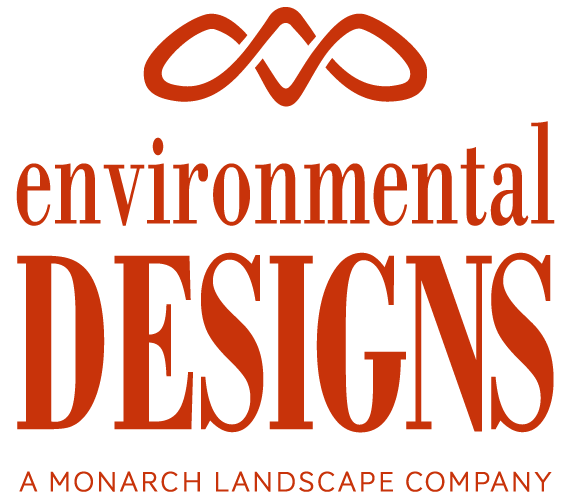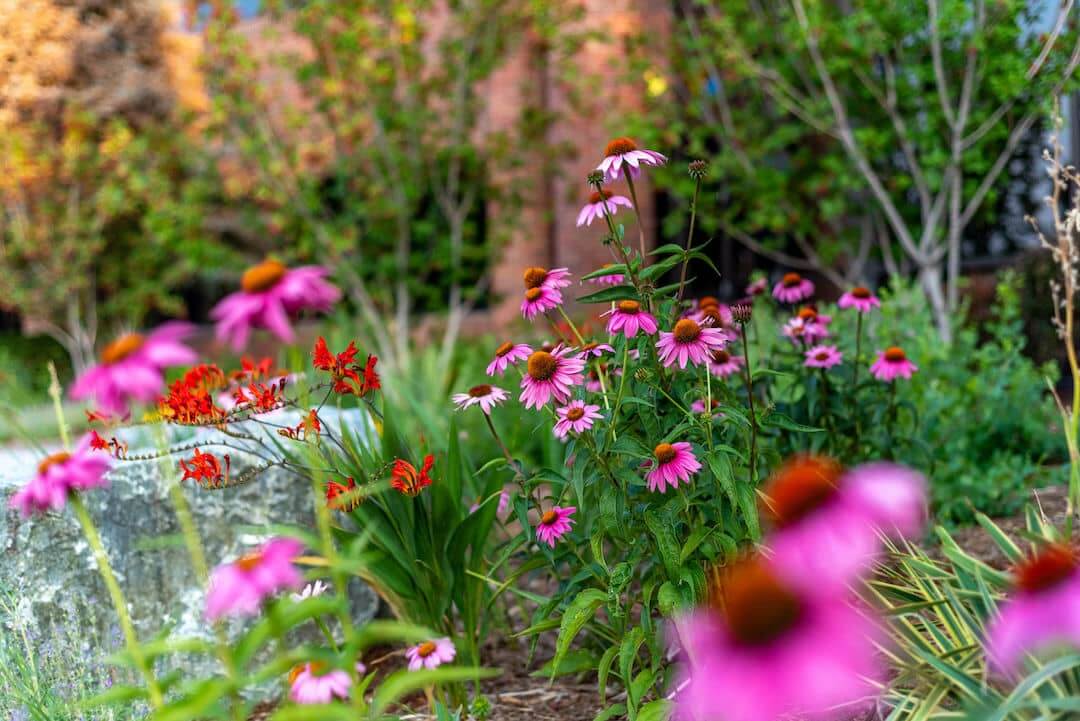
Sustainable Landscape Design
Last Updated: September 21, 2021
Environmentally friendly and climate appropriate landscapes are the foundation of creating something sustainable. The benefits of a sustainable landscape can have lasting effects on the environment. Some of these benefits include water conservation, improving soil health, reducing maintenance labor and organic waste generation, carbon sequestration, and creating habitat through appropriate plant selection.
A sustainable landscape can have a huge impact on the national demand for water. With water conservation in mind, designing a landscape sustainably can reduce water usage and cost through selecting water wise plants, efficient irrigation systems, and choosing mulch and compost when you can. In this post, we will take a deep dive into the sustainable options that can be implemented in the design of each unique property.
What Is Sustainable Landscape?
Sustainable landscapes actively contribute to the environment and health of the community. Sustainable landscapes sequester carbon, clean the air and water, increase energy efficiency, restore habitats, and create value through significant economic, social and, environmental benefits.
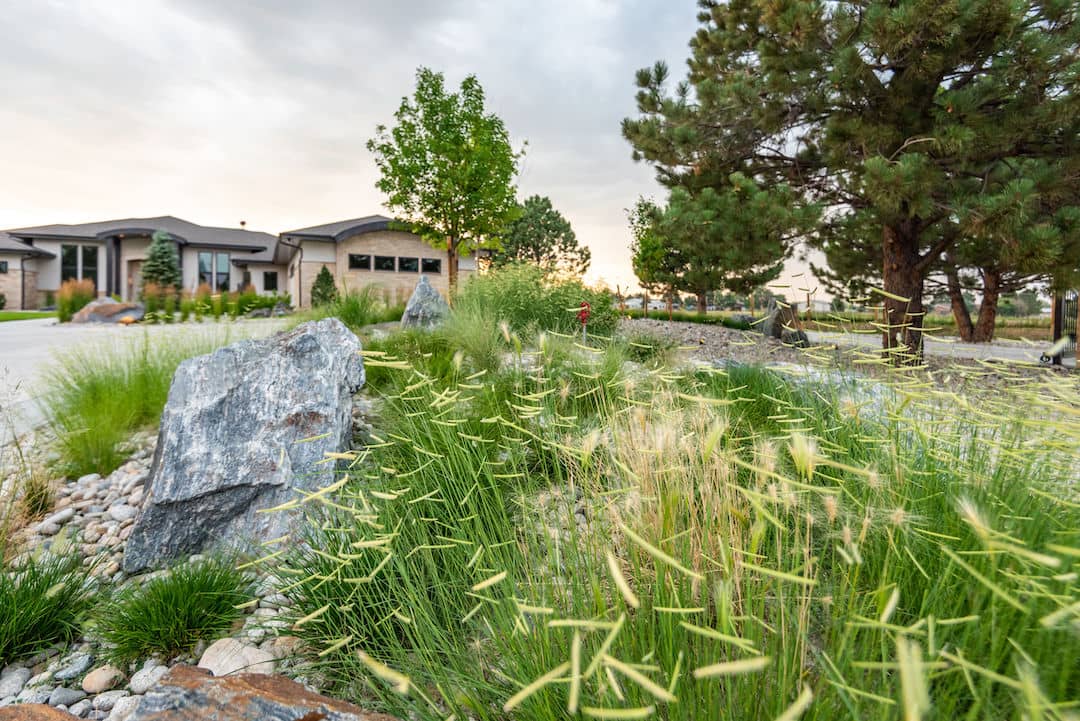
Benefits of Sustainable Landscape
- Cost effective – Using less water ultimately saves you money on your water bill each month. Energy conservation and increasing energy efficiency will save money in the long run.
- Long lasting – Sustainable landscapes are long lasting and give back to the community.
- Minimal use of fertilizers and pesticides will promote the organic growth without any of the damage to the environment.
- Reduced maintenance – Reducing maintenance and labor is also a large part of resource conservation. Fortunately, sustainable landscape and low maintenance landscape design often goes hand in hand.
- Sequester carbon – Carbon Sequestration is released into the atmosphere as a result of tilling soil and burning fossil fuels. Pulling carbon from the atmosphere combats climate change.
- Habitat gardening – Creating habitat through appropriate plant selection increases biodiversity and encourages birds, pollinators, and other wildlife to thrive.
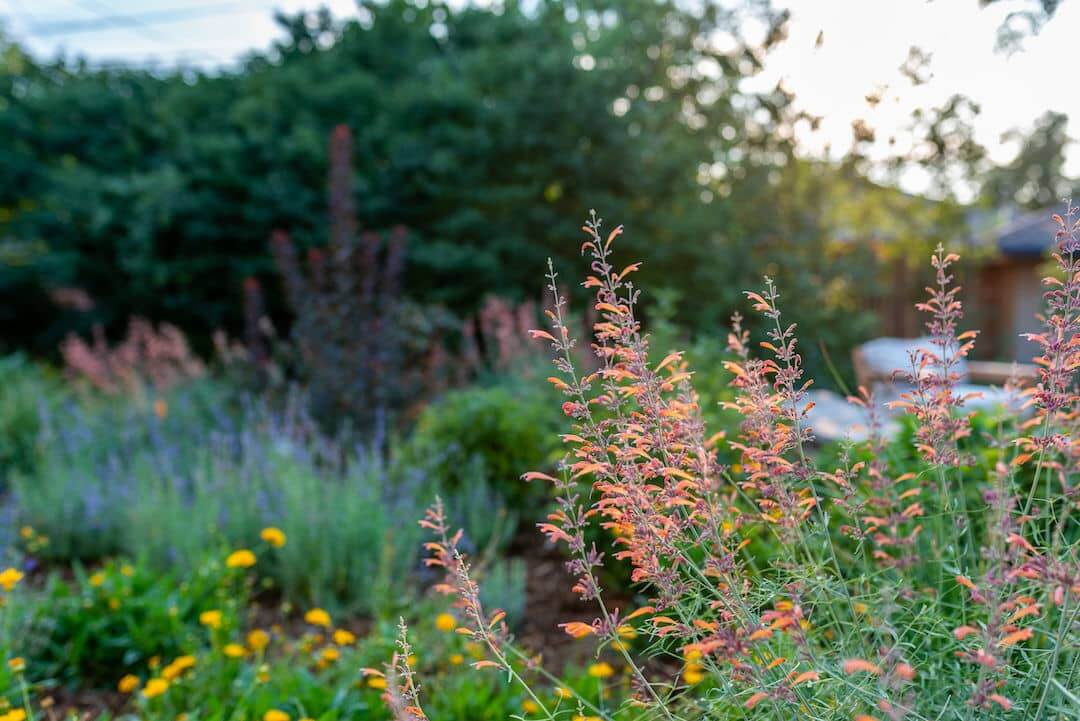
Principles of Sustainable Landscape
- Treat water as a resource
- With high efficiency irrigation and native, low-water plantings, the need for irrigation can be reduced and, in some cases, eliminated. Rainwater harvesting can also be used for irrigation.
- Preserve existing plants
- Preserving and caring for existing plants is crucial to sustainable landscape design. But it doesn’t stop there, preserving existing trees and native plantings will minimize the disturbance of the natural processes occurring in the yard, and help with resource conservation.
- Value Soil
- Organic soil amendments can prevent large plant replacements in the future.
- Conserve material resources
- Landscape construction and maintenance produces a significant amount of waste. Many landscape construction materials are transported hundreds of miles and are very energy-intensive so it’s best to choose appropriate materials and recycling whenever possible.
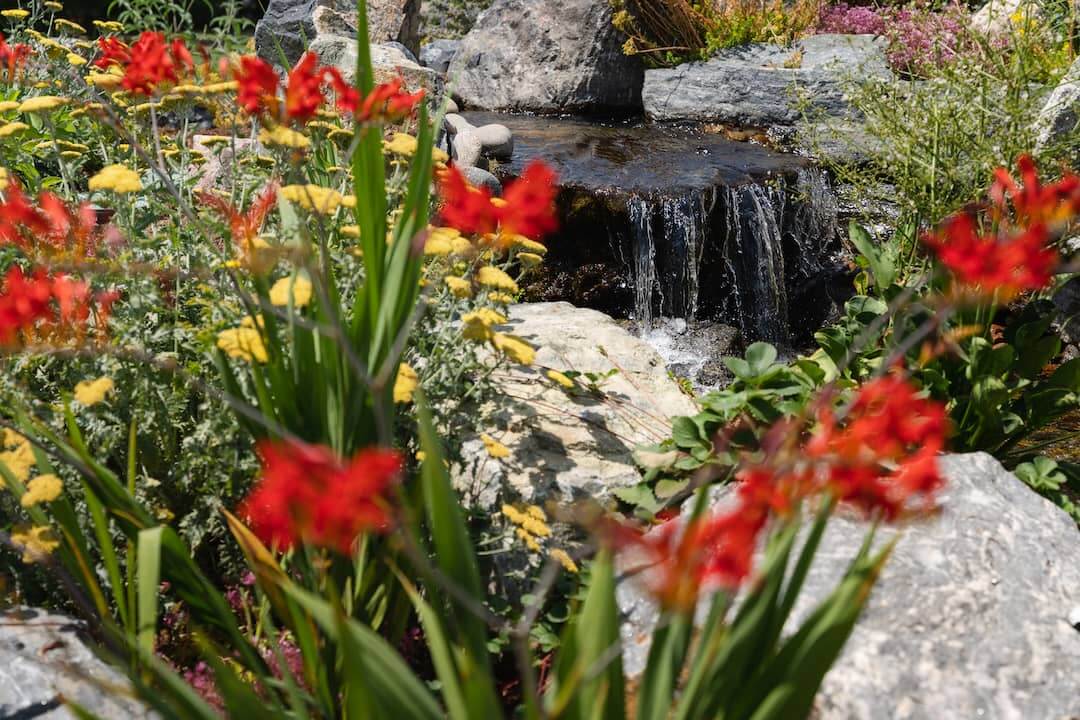
Sustainable Landscape Design Plan
At Environmental Designs, we are helping design sustainable landscapes every day for both residential and commercial properties. It’s important to have a process in place during the design phase of the project. Here are the steps our landscape experts suggest taking.
- Take stock – First, analyze your existing conditions. Find out what native plants you have, which plants are thriving and really doing well, look into the water usage, consider which areas are requiring fertilizers/pesticides.
- Have a plan – Time to determine the usage of your space. Make sure to decide what kind of elements you want to include in the space. For example, do you want a place to entertain, a space for kids to play, a place for your own vegetable garden?
- Start small – Pace yourself by choosing a small area to begin. Tackle a problem area that you can accomplish first instead of trying to renovate your entire landscape in one go.
- Rule of 3 – Odd number arrangements are generally more appealing aesthetically than even numbers. If you are laying out a new planting bed, try arrangements of 3, 5, or 7.
- Go native – Choosing plants are suited for your specific growing conditions will reduce the amount of water, fertilizer and time required to care for them
- Know your plants – Researching plants and choosing the right sun/shade requirements will make sure you save time, money, and energy when trying to grow them. Expanding on that, make sure you learn about the unique requirements of each plant and group them together based on those requirements.
- Give them space – Make sure you allow your plants to grow and mature in the space you allotted for them.
- Grass cycle – Leaving grass clippings in the lawn returns a lot of good nutrients back into the soil and is a great natural fertilizer. Plus, you aren’t contributing waste into landfills.
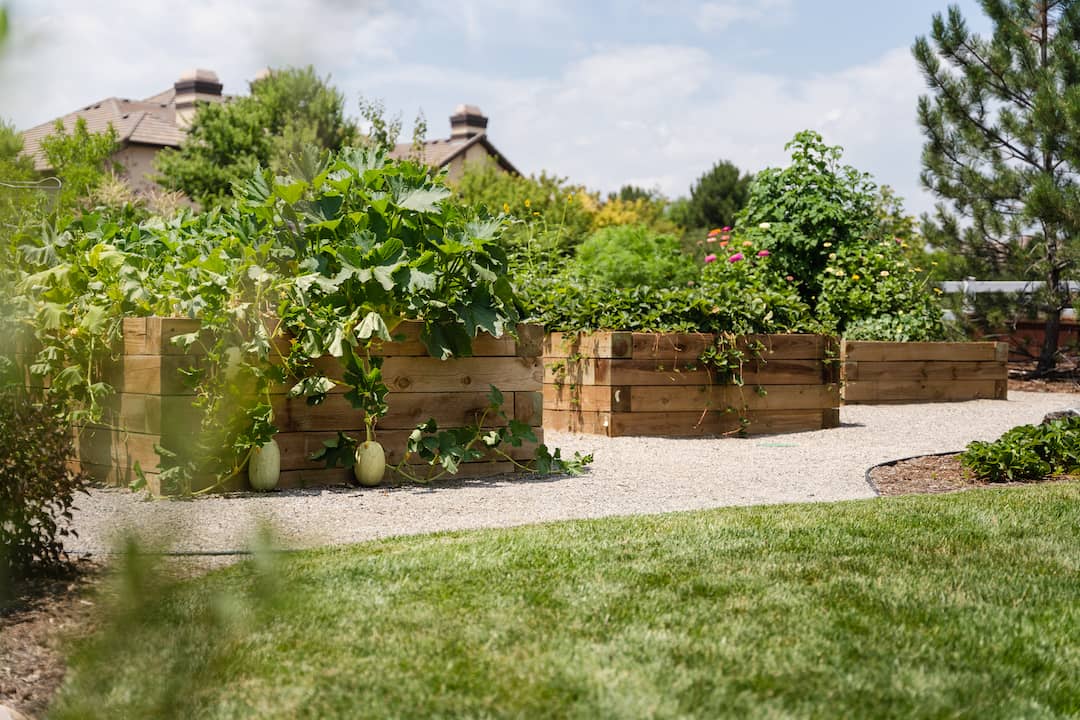
Considerations
Each site is unique and a one size fits one basis. Here are some things to consider and be conscious of.
- Irrigation needs – Native plants or low-water plants need little to no irrigation require less maintenance and use fewer resources to thrive.
- Stormwater management – Slowing down water movement with a rain garden or a bioswale will help with erosion control. Rainwater harvesting systems can also be beneficial for deep-root watering trees and other plants.
- Permeable surfaces – Another great strategy for stormwater runoff. These allow the water to be absorbed into the soil below.
- Locally sourced materials – Selecting local materials goes a long way in reducing the ecological footprint considering the distance some materials travel to other parts of the country.
- Keep existing plants – Make sure to keep your existing plants as long as they aren’t invasive and consuming too many resources to stay alive.
- Maintenance – Some maintenance tasks like spraying fertilizers are not beneficial to the environment. Keep this in mind when designing your sustainable garden.
- Plants that support beneficial wildlife – Supporting local wildlife and pollinators go a long way in benefiting the larger ecosystem.
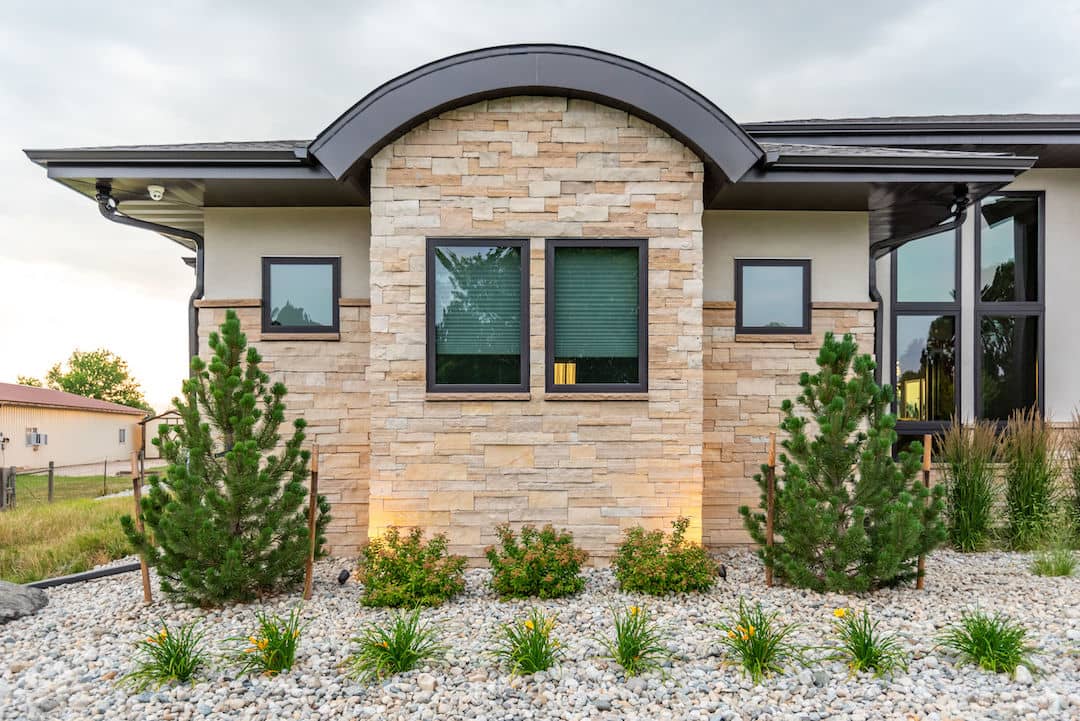
Sustainable Landscape Design Ideas
There are many creative ways to design your space with sustainability in mind. Here are some ideas to keep in mind for your space that our landscape experts recommend.
- Reclaim spaces rather than tearing them down. Preserve the thriving plants and materials that are already existing.
- Use local materials to save energy and reduce overall footprint.
- Use local native plants and pollinator friendly plants.
- Harvest rainwater and minimize the need of an irrigation system.
- Use permeable hardscape surfaces for stormwater management.
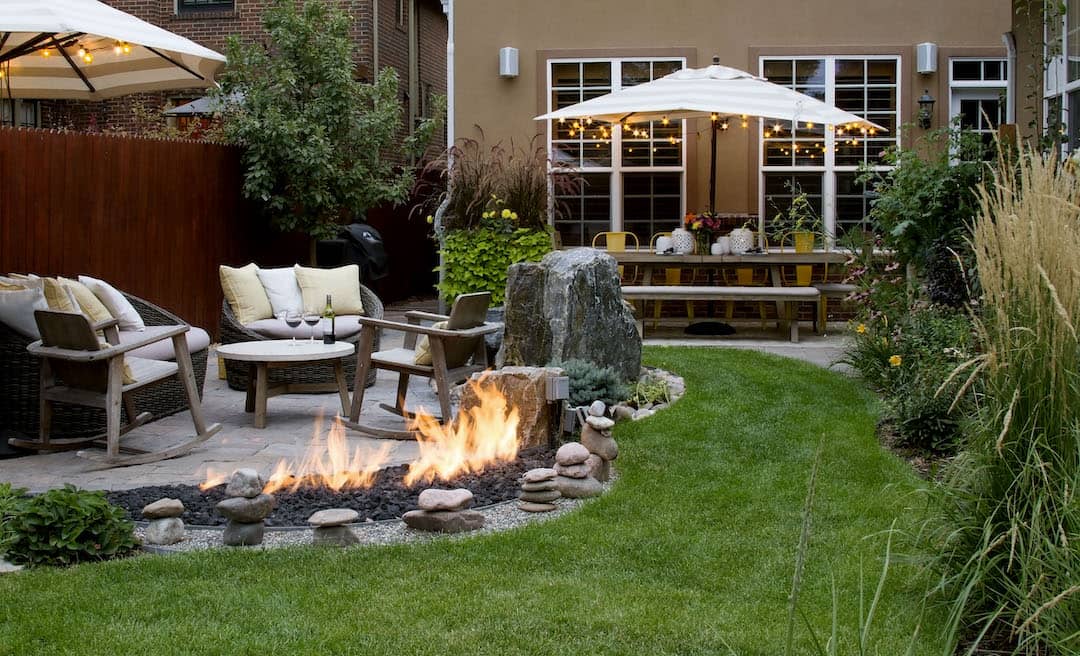
Sustainable Landscape Project in Denver, Colorado
Here’s a look at one of our landscape projects that tackled sustainability.
This charming, yet challenging landscape project in Denver started when this young family wanted to turn their small, flat, yard into a sustainable, and beautiful entertaining space. We used interlocking arcs, raised planters, ground-level fire, colorful boulder water features and contrasting pavers to create multiple outdoor rooms. Our main goal was to create a truly custom Denver landscape and turn a tiny rectangular space into a dynamic and functional yard for entertaining and enjoying quality family time.
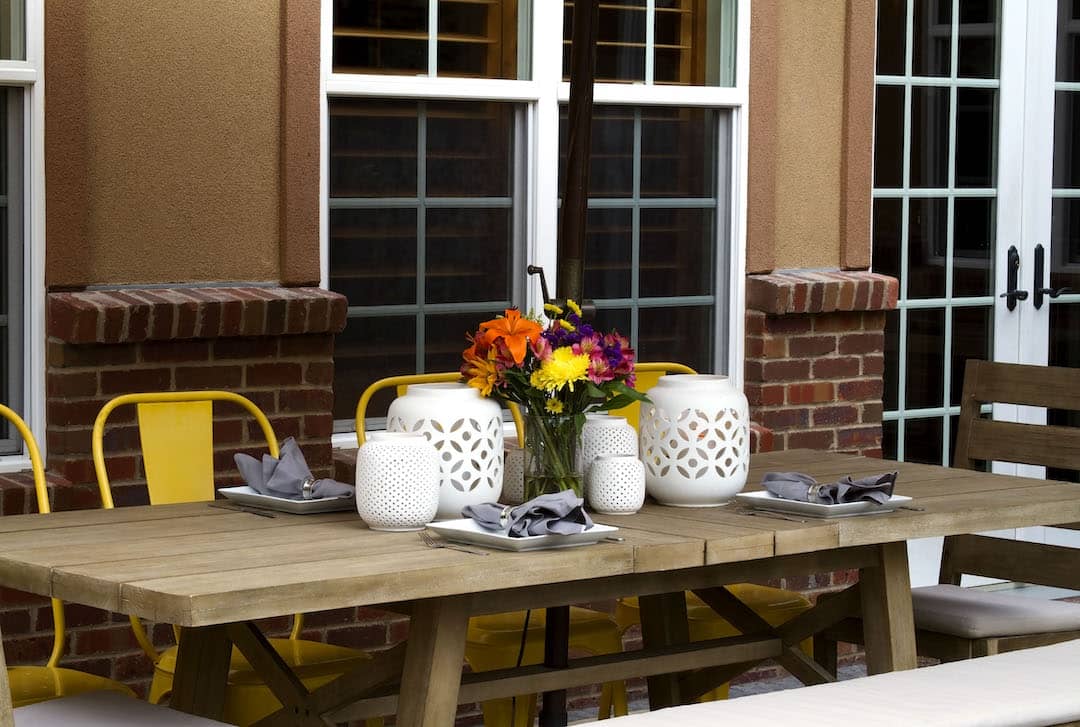
Sustainable Outdoor Living Rooms
For this functional, yet sustainable outdoor living room, we built raised planters and a raised sitting area to create dynamic elevation changes and further define the outdoor rooms. The fire pit and water feature take on unique crescent forms to follow the contours of the patio space. Well over half of the plant material is edible or medicinal in one form or another. Irrigation was broken up into several zones to deal with plant needs as well as sun/shade for sustainability. Ultimately, we created a truly custom Denver landscape that our clients can enjoy through every season of the year!
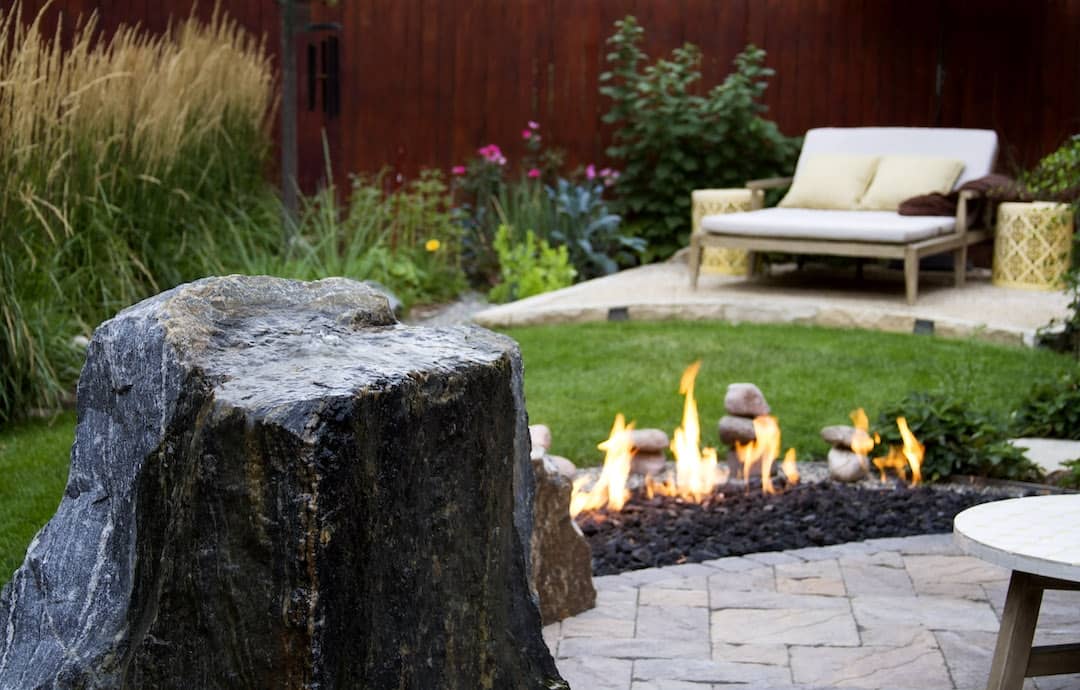
Sustainable Landscape Design and Installation
When creating a planting plan for a small space it is easy to get carried away and overfill the space. Through the installation process, the designer worked closely with the homeowner to make sure that the small space was not overplanted and that irrigation zones were created and laid out to minimize the use of water. We also spoke to a permaculture expert about creating an edible garden and ensuring that the proper soil mixtures were used in the raised planters and as amendment. We grouped plants by water and light requirements in order to be efficient with water usage while also implementing low-water nozzles. The most quantifiable recycling of resources is in the front yard walkway where we were able to reuse more than 3 tons of existing flagstone by pulling it up and re-laying it over a new base. There were no specific guidelines required for this site. However, the homeowner is very conscientious and looked to us to make sure that her yard is not only beautiful but also sustainable.
Need Help from Landscape Professionals?
If you are looking for a trusted landscape company to help guide you through the process of sustainability, we’d love to share our landscape expertise with you. Contact us today for a landscape consultation!
